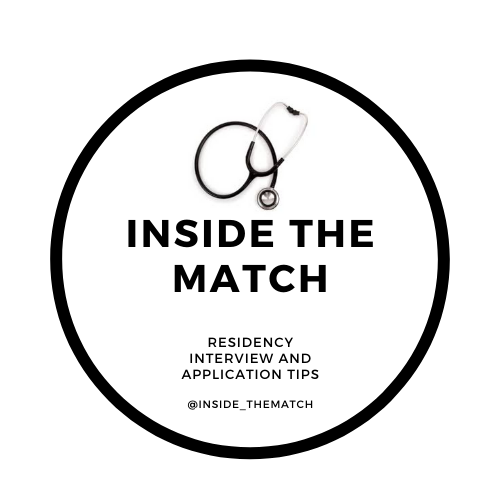The Best Kept Secret in Military Medicine
Written by Andrew Woods
I want to start this post by wishing a happy Veterans Day to all those who decided to put the country over themselves, to be part of something bigger, and to serve in ways that less than 10% of Americans will. Thank you for inspiring those of us currently serving to reach for something higher. HOOAH!
I want to apologize in advance for all the acronyms that are about to follow, but that’s the military for you. I enlisted in the United States Army Reserves (USAR) in 2015 as a Specialist and served until beginning medical school, after which I was commissioned as a Second Lieutenant in the Army Medical Department (AMEDD) via the Medical Student Stipend Program (MSSP). When most medical students hear of military medicine, they envision the active-duty commitments associated with the Military Health Professions Scholarship Program (HPSP). While the HPSP is a great option for some, for others it just does not fit with their career or life goals. So, let’s dive into what the MSSP is, and isn’t, to educate you and decide if a military career is still in your future!
1. Those enrolled in the MSSP will enter the regular Match with the rest of their classmates.
Under the HPSP, there is a separate military match that occurs in December in which candidates are either matched into their first- or second-choice military specialty, “deferred” to civilian residency (aka “the Match”), or matched into a military transitional year. Under the MSSP, candidates go through the regular Match in March and are bound by all the same rules dictated by the National Resident Matching Program (NRMP).
2. Those enrolled in the MSSP receive a monthly stipend, but no assistance with tuition or books.
Under the HPSP, candidates have their tuition paid for, books/training costs are covered, and there is a monthly stipend provided to cover regular living expenses. While the MSSP provides that stipend as well (approximately $2200 for 2021), there is no tuition/books/training assistance, so students still have to figure that out on their own. They might receive tuition through government loans, private loans, or support from a family member. The HPSP has a one-for-one trade, meaning for every year of scholarship, candidates owe the military one year of active-duty service. The MSSP obligations are a bit different, with candidates owing one year of service in the USAR for every six months of scholarship received.
3. Depending on what you match into, you can exit the MSSP and enter the Specialized Training Assistance Program (STRAP) and/or Healthcare Professional Loan Repayment Program (HPLRP).
For those enrolled in the HPSP, after Match, they will begin their residency training at a military program or a civilian program if they were selected for a deferment. Since everyone in the MSSP matches via the NRMP, we begin training in a civilian program. Each year the military releases its list of “desired specialties,” typically covering specialties like Emergency Medicine, Family Medicine, Pediatrics, Preventive Medicine, and a host of others. Should you match into one of those and increase the number of service years owed (on top of the MSSP), you can be eligible for an additional scholarship. The STRAP provides the same stipend and terms as the MSSP, while the HPLRP carries a seven-year commitment and up to $250,000 in loan repayment.
4. Your obligations begin at the beginning of residency, but you still have opportunities for training during medical school.
While in school, my obligations to the Army were to do well and continue on my path to becoming a doctor. Each month I completed my “drill” obligations by attending class, participating in extracurricular activities, and ensuring my medical readiness was always kept up to date. There are also opportunities to complete additional training if your schedule allows, such as the Direct Commission Course (DCC) and Basic Officer Leadership Course (BOLC).
5. At the end of the day, DO NOT enroll in any military program unless you feel a true calling to serve!
I cannot stress this enough…the military is not for everyone, and that is ok! There is a reason fewer than one percent of Americans are currently in the military. At the end of the day, while the financial benefits are certainly appealing, they are not worth it if you will be miserable for your years of service after residency. Before you raise your right hand and swear an oath to the Constitution, make sure you fully understand your commitment responsibilities and consult with your friends and family to make the best decision for your future.
In just four days, November 15 will mark six years since I first enlisted in the USAR. It has been the best decision of my professional career and has resulted in more experiences and opportunities than I could have ever imagined. However, it has also created stress in my personal life that requires a constant give and take (and an incredible support system from my wife and family!). The MSSP has granted me the ability to pursue Physical Medicine and Rehabilitation (PM&R) while maintaining the flexibility needed for my family to create the lives we desire going forward. I am appreciative every day for my recruiter introducing me to the MSSP and allowing me to continue my service while training to become a military physician.
For those interested in the HPSP or MSSP, find your local recruiter at https://www.goarmy.com/amedd.html.
**Andrew is currently a 4th-year medical student and member of the United States Army Reserves. The advice provided throughout this post does not reflect the official stance of any organization that he represents or participates in. Engage with Andrew on Twitter @TheAndrewWoods.

